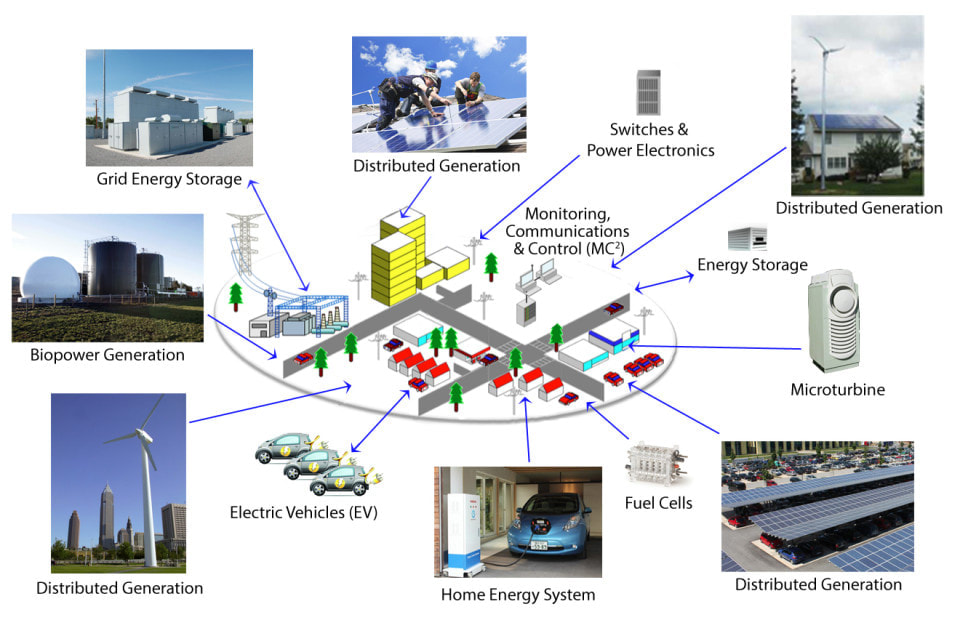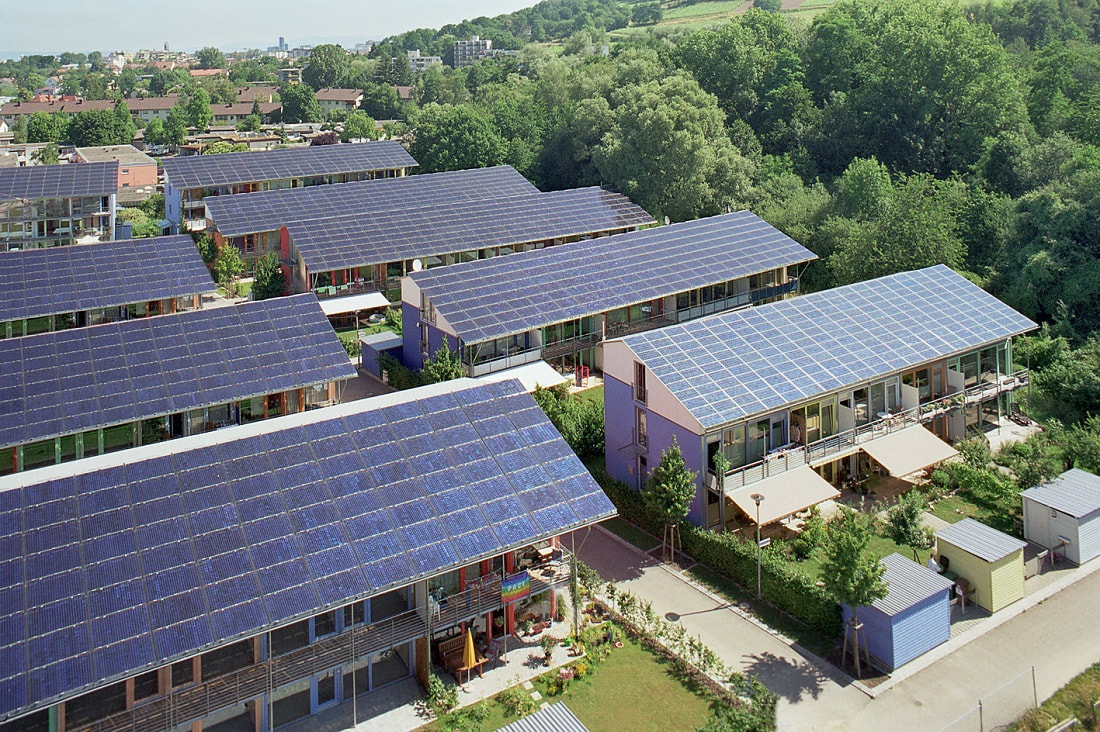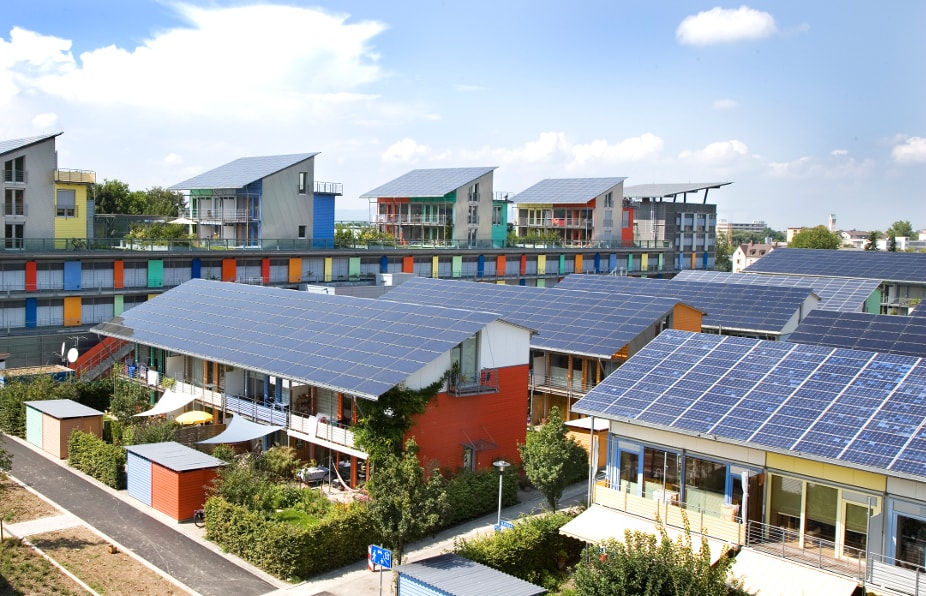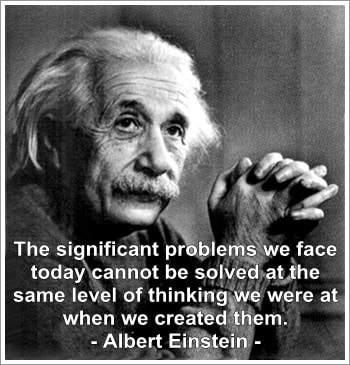Power 4 All
After Fukushima, Germany chose to close down all of it's nuclear power plants by 2022. They could only accomplish this by radically changing the way they looked at the energy market from investment, to generation, to delivery. It is important to note that they have been so successful that by 2018 they have closed all but two plants that share borders with neighboring countries. Some of their utilities are paying to install residential solar and install microgrids. Energy exchanges have begun and homeowners can participate. The articles below will relate some of how this is working.
Elements of a Secure Decentralized System
Elements of a Secure Decentralized System
- Local management based on a standardized system that feeds into the grid after the local microgrid charges local storage systems.
- Many into one: the grid does not go away, but becomes a supporting structure for many microgrids being fed by many sources.
- Flexibility to add or refine technologies as they develop.
- No single point of failure, redundancy and far greater security.
The Power 4 All Project is a growing movement toward decentralized/distributed generation based on a community model. This is not an overnight shift and will require that significant public will be developed to move the utilities and government toward adoption. The Kitsap Resiliency Project teams are already working on three separate areas to develop on-the-ground models for the entire community:
The technology exists to make this happen, we need to clear some perception, policy, regulatory and corporate profitability hurdles to make this work.
- The Urban model: We are beginning outreach to newer, urban, developments to explore the possibility of creating a community microgrid fed by roof mounted solar.
- The Rural model: We are beginning discussions with a South Kitsap farming community to explore a microgrid installation supported by solar and potentially anaerobic digestion and wind.
- If these models are successful we will seek a housing community to model on a larger scale.
- Power the home/building
- Power the community
- Power the grid
The technology exists to make this happen, we need to clear some perception, policy, regulatory and corporate profitability hurdles to make this work.
|
Attributes of Microgrids
Integrates supply-side and demand-side resources on a local distribution grid at low voltage level. Two modes of operation:
|
Security
Distributed Power Generation for Homeland Security:
Proposal for a New Federal and State Partnership By Lewis Milford, Clean Energy Group Assisted by Ruth O’Meara-Costello, CEG Intern (excerpted)
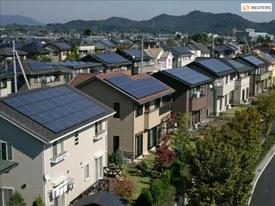
New Unconventional Solutions Needed
Terrorism and energy issues should effect new thinking and new solutions. Planning for power outages has usually assumed the cause of an outage to be either equipment or weather related, and responses to outages related to these causes are necessarily different from responses to terrorism. “Length of outages, coordination of attack, and scope of damage make conflict conditions very different from blackouts caused by hurricanes or heightened electricity demand. ”Faced with these risks, many experts dealing with the problem of energy system vulnerability have returned to solutions first advocated decades earlier. In an unusual statement of support for renewable and distributed energy, former top government security chiefs endorsed clean energy options in a letter to Congress. On September 19, 2001, a week after the attacks, the former head of the CIA, Woolsey, former National Security Advisor to President Reagan, MacFarland, and former Chairman of the Joint Chiefs of Staff, Moorer wrote, “Our refineries, pipelines and electrical grid are highly vulnerable to conventional military, nuclear and terror attacks."
More, follow this link: Distributed Power Generation for Homeland Security
Terrorism and energy issues should effect new thinking and new solutions. Planning for power outages has usually assumed the cause of an outage to be either equipment or weather related, and responses to outages related to these causes are necessarily different from responses to terrorism. “Length of outages, coordination of attack, and scope of damage make conflict conditions very different from blackouts caused by hurricanes or heightened electricity demand. ”Faced with these risks, many experts dealing with the problem of energy system vulnerability have returned to solutions first advocated decades earlier. In an unusual statement of support for renewable and distributed energy, former top government security chiefs endorsed clean energy options in a letter to Congress. On September 19, 2001, a week after the attacks, the former head of the CIA, Woolsey, former National Security Advisor to President Reagan, MacFarland, and former Chairman of the Joint Chiefs of Staff, Moorer wrote, “Our refineries, pipelines and electrical grid are highly vulnerable to conventional military, nuclear and terror attacks."
More, follow this link: Distributed Power Generation for Homeland Security
